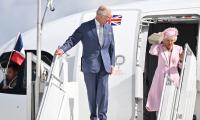Our ‘Foreign Office boys’, as they are generally called, are about the best amongst the world. They have helped Pakistan steer through various difficult situations and have been found to be active and ahead of others, in advancing not only Pakistan’s foreign policy, but also supporting international norms and ideas. There are names such as Agha Hilali, Agha Shahi, Shamshad Ahmed, Riaz Ahmed Khan, Iqbal Akhund, Riaz Khokar, Abdul Sattar, Munir Akram, Niaz A Naik and many others.
The statement on Kashmir of the minister of human rights of Pakistan, and the failure of the Foreign Office to co-relate with the narration of the prime minister, has generated much controversy. The minister is in fact seeking an out-of-the-box solution for the problem of Jammu & Kashmir – especially after the suicidal and unilateral action by the BJP government under Narendra Modi. In order to examine if any solution can be suggested at this moment it is appropriate first to see the historical background of Jammu & Kashmir since the Amritsar Treaty of 1846.
Babar, when he first visited Kashmir, exclaimed that “If there is a paradise on earth, it is here.” But since Gulab Singh Dogra established the Dogra dynasty, the life of people, particularly the Muslim majority in Kashmir, became hell.
As the demand for a separate Pakistan was growing in the rest of India, the Muslims of Kashmir too saw the new country as their salvation from tyranny. Under Jinnah’s guidance, the Muslim Conference party won the majority of seats in the 1947 elections, and it was clear that the population wanted to join Pakistan. Geographically and economically too the boundaries of Jammu & Kashmir and Pakistan were far better than those within India. However, India had other designs.
First at the time of Partition, three tehsils of Pakistani Gurdaspur with small Hindu minorities were illegally – under the influence of Lord Mountbatten and Nehru/Redcliff troika – awarded to India, which gave it access to Kashmir.
Second, the wily Congress leaders concentrated on influencing and threatening the Maharaja to concede to India. Under the legal dispensation, which was the Indian Independence Act, 1947, the rulers of princely states could decide to execute an ‘Instrument of Accession (IOA)’ to indicate their choice of choosing either Pakistan or India. The maharaja, who was still undecided on August 14 in 1947, was faced with such agitation and killings in the state that he ran away to India. On October 19 the same year, hundreds of men from Waziristan left for Kashmir to liberate it.
The maharaja in turn asked for India’s. Lord Mountbatten, who was the governor general, decided that help would be given by India only on the condition that the maharaja first acceded to India. An IOA was eventually signed but under pressure and only then were troops sent.
Mehr Chand Mahajan in his book, ‘Looking Back’ has made a fascinating revelation that Indian troops were already there before the IOA was signed – which clearly shows how the entire signing of this instrument was managed.
India’s entire case is based on this IOA. However the IOA makes interesting reading because, contrary to popular belief, it was expressly made subject to a decision by the people of Kashmir. The maharaja specified, while accepting the IOA of Kashmir to India, that “since accession has been the subject of dispute, the question will be decided in accordance with the wishes of the people.”
Nehru too in his first broadcast thereafter agreed that “The fate of Kashmir is ultimately to be decided by Kashmiris. We will not and cannot back out of it.” He went on to say “Kashmir is not the property of India or Pakistan. Its fate shall be decided by the integrity of plebiscite.” (Statement in the Indian parliament).
What then is the legal status of IOA in these circumstances?
Since the maharaja, Nehru and Lord Mountbatten all committed to the people of Kashmir to hold a plebiscite, the IOA signed by the maharaja was in law ‘conditional’. Added to this is the fact that the maharaja by October 26, 1947 was no longer competent in any case to sign the IOA because he had already been overthrown by its subjects and had fled from Srinagar to Jammu. The IOA was also in any case not the result of the free and independent mind of the maharaja as it had been maneuvered by various Congress leaders influencing him. This is why the legal advisors to the British Foreign Office, the attorney general of the Attlee government and legal advisors to the US Department were all of the view that “the execution of IOA could not accomplish the accession of Kashmir and the matter was to be left with the people.”
S M Zafar, in his book, ‘History of Pakistan reinterpreted’ states that “Thus, people of the valley of happiness, a paradise on earth were denied the right to choose their destiny and instead the valley of bliss has since then been converted into a valley of death.”
It was when General Gracey agreed to send regular Pakistani troops to the Azad Jammu & Kashmir front that India, under the misconception that it had a legal point in the IOA, went to the UN asking the Security Council to intervene. Pakistan’s case was dexterously and vigorously pleaded by Foreign Minister Sir Zafarullah Khan, who argued for days and successfully proved that the IOA was technically and legally invalid and that India used fraud, oppression and aggression in securing the IOA. Finally, Pakistan requested that the Security Council should ensure holding a plebiscite through a fully impartial state government.
The UN Security Council, while accepting Pakistan’s position, passed two resolutions – August 13, 1948 and January 5, 1949 – which were both accepted by India and Pakistan and which not only provided the details of ceasefire and troops withdrawal, but also the holding of the plebiscite. This is Pakistan’s greatest success. The best service to the cause of Kashmir that the prime minister with his Foreign Office has done is to bring back the UN resolutions to the forefront and to show the true Nazi colours of the Modi regime to the world.
But the next question now is whether the resolutions still survive after so many years, or if they have been damaged by time. And what Pakistan can do for their enforcement. This will be discussed in Part II of this article.
To be continued
The writer is a Supreme Court advocate, former federal minister for law and former president of the SCBA.
Email: ali@mandviwallaandzafar.com
The cases of Attabad Lake and Gwadar simply highlight the many tragedies that exist around the country
Reaffirming loyalty to democracy as a problem solver can be a good starting point
Unfortunately, Pakistani films and TV dramas have seldom ventured beyond domestic intrigues and love triangles
A woman walks past a building of the International Monetary Fund. — AFP/FileThe annual and spring meetings of the...
Late Benazir Bhutto's daughter Asifa Bhutto Zardari addresses the Christian community in Bihar Colony on January 23,...







